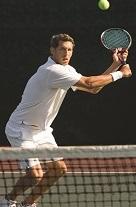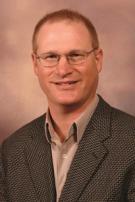

Taking up about 63 acres, the facility, nicknamed ‘the new home of American tennis,’ will also house the USTA’s Community Tennis and Player Development Divisions, with the goals of getting more people to play tennis recreationally and developing high-level champion, respectively. The National Campus also will be an “innovation laboratory,” says Kurt Kamperman, the USTA’s chief executive of community tennis, where new tennis teaching and coaching methodologies will be developed and refined.
In addition to standard 78-foot courts, the facility will include eight 36-foot-long and eight 60-foot-long tennis courts. These shorter courts are designed for youth play but are increasingly being used for adults, too. Thousands of shorter courts continue to be built or lined at facilities, parks and schools around the country. (When “standalone” 36- and 60-foot courts are not able to built, then “blended lines” are incorporated onto 78-foot courts, allowing for shorter-court play.)
A part of the USTA National Campus, with 12 hard courts, will be dedicated to college tennis and will handle conference tournaments and more. Many of the events on the thriving college tennis scene, which now includes not only varsity play but club and recreational competitions, can find a place to play here as well. There will also be a six-court indoor facility.
But it’s the number and variety of courts that are generating the most professional interest – and the most interest at the sports planning level, says Virgil Christian, the USTA’s senior director of market/facility development and collegiate tennis. According to Christian, there are about 50 events booked into the facility already. “Once we get going, we may have 80 or more events there every year. Some will rotate through, but some might want to find a permanent home.” The USTA estimates more than 100,000 players will use the facility each year.
While the facility in Lake Nona may be one of the newest and largest on the tennis scene, there are plenty of communities around the country capable of hosting tournaments and events for players of all ages and abilities.
Cary, North Carolina
One of the areas that consistently receives accolades for hosting tennis events and for its amazing tennis activity is Cary Tennis Park. Owned by the Town of Cary, it is a testament to how an active local tennis scene can truly impact tennis nationally.
The facility currently has 29 hard courts, in addition to four permanent 36-foot courts (plus, 18 of its full-size hard courts have blended lines for 60-foot tennis). “The town is investing about $7 million into the facility over the next few years,” says Sean Ferriera, the tennis services coordinator for Cary Tennis Park. “We’ve purchased additional land next door for expansion, and we’ve just renovated eight of our courts. We’ll be doing a clubhouse renovation and building seven covered courts, too.”
Just eight miles from the Raleigh-Durham airport, Cary Tennis Park has hosted all types of tournaments and events—regional, sectional and national—including recently its first men’s professional Challenger. “In 2017, we’ll host the NCAA Division III Championships again,” Ferriera says, adding that they now have three new electronic scoreboards, too.
“We work very closely with the Western Wake Tennis Association and the Triangle Tennis Enthusiasts, two groups that also provide volunteers that help out at tournaments here,” Ferriera adds. “There is a lot of enthusiasm in the community.”

The Phoenix area is another hotbed of tennis in the U.S., and one of the most active facilities in the area is the Paseo Racquet Center, owned by the City of Glendale, but privately managed by three brothers of the Prudhomme family, all Elite Teaching Professionals for the U.S. Professional Tennis Association (USPTA).
“We host a lot of tournaments here,” says Ed Prudhomme, the director of tennis and facility manager. “We’ve done all types, from kids to adults to high school, college, even professional men’s and women’s tour events.”
Prudhomme says he and his staff take care of everything for incoming tournaments, from doing the draw sheets to match scheduling and more. The Paseo Racquet Center has 19 hard courts and a pro shop that offers racquet stringing and customization.
The Phoenix area gets more than 300 days of sunshine every year. There are 8,000 hotel rooms all within a 20-minute drive, plenty of restaurants to fit all tastes and budgets, and museums, outdoor recreation and much more. “We have such a diverse set of amenities here,” says Kim Larson of the City of Glendale.

Tennis facilities in Columbia, Missouri, include parks with a total of 31 courts (19 of them are lighted), many of which include blended lines for youth tennis. The largest facility is Cosmo-Bethel Park, which has 12 courts available (including four at the adjacent middle school). There are also eight courts at Cosmo Park.
“Our Parks & Rec Department is ranked as one of the best in Missouri,” says Julie Ausmus, tourism development program manager for the Columbia CVB. “They do a great job of maintaining our courts.”
In addition to the city courts, the 10-court Mizzou Tennis Complex at the University of Missouri is one of the best college tennis facilities in the ITA Central Region, with six outdoor and four indoor courts. The center includes elevated spectator seating, coaches’ offices, locker rooms, lounge training room and more.
“We have about 70 city parks and over 50 miles of trails here, and a lot of green space,” adds the CVB’s Megan McConachie. “The city puts a lot of emphasis on making sure people enjoy recreation year-round.”

It’s hard to talk tennis nationally without mentioning what’s happening in the Columbia, South Carolina, area. Part of the reason is the excellent facilities in and around Columbia, but also it’s the fact that Jorge Andrew is the director of tennis operations for both the 21-court Lexington County Tennis Complex (LCTC) and the 30-court Cayce Tennis & Fitness Center (CTFC).
A former Venezuelan Davis Cup player, Andrew was on the pro tour for more than 10 years. He was the second person in the world to become a Master Professional for both major tennis-teaching organizations, the USPTA and the Professional Tennis Registry (PTR), and he is one of the most highly-regarded teaching professionals and tennis directors in the country.
“Having someone like Jorge, who understands tennis and teaching tennis and what makes a good event, puts us ahead of the game,” says Scott Powers, executive director of the Columbia Regional Sports Council.
The newest facility is CTFC, which was named the 2013 USTA Outstanding Facility. In addition to its courts (all lighted, including seven permanent short courts), the facility has an 11,000-square-foot clubhouse and a 2,400-square-foot fitness area with state-of-the-art equipment. The clubhouse has wi-fi throughout, a conference room, meeting rooms, a catering kitchen, pro shop and locker rooms. CTFC pairs up with the nearby LCTC, and the result is that the area can, and has, hosted events of all sizes, for all ages.
“We try to provide superb customer service,” Andrew says. “You can’t just be a tournament, you have to do many things to serve players, coaches, friends and families.”
The City of Columbia also offers top-notch facilities, too, including nine hard courts and five clay courts, all lighted, at the Columbia Tennis Center, and 12 hard and four clay (all lighted) at the newly expanded Southeast Park. The Richland County Tennis Center also has 12 lighted hard courts, as does the Caughman Road Tennis Center.
Columbus, Georgia
Cooper Creek Tennis Center is the largest soft-court public tennis facility in the U.S., with 30 clay courts. And it’s growing. The Columbus Regional Tennis Association (CORTA) is working with Columbus State University and the city to add nine clay courts, 12 hard courts, and four 60-foot courts, in addition to a new clubhouse.
The expansion project, expected to be completed in August, will enhance CORTA’s ability to host local, regional and national tournaments for all ages and levels, says Judy Pearce, CORTA’s executive director. One of the keys for helping with tennis events and tournaments is the enthusiastic CORTA membership, which keeps tennis top of mind in Columbus.

Tennis in Mobile is big business, especially with the 60-court Copeland-Cox Tennis Center/Mobile Tennis Center, one of the world’s largest. “We’re well-supported by the city and the county, so we can easily handle large events,” says Scott Novak, the director of tennis. “In fact, we recently completed a $250,000 renovation. Our city has always been good about keeping the facility in great shape because they know if the facility is top-notch, tournaments keep coming back.”
The facility hosts events of all types, including large tournaments that bring in 2,000 players. (There are two other excellent city parks that can be pressed into service if needed, too.) In addition, all 60 courts at Copeland-Cox, along with the courts at the other city parks, are lined for 36- and 60-foot tennis. “The USTA likes to see you have enthusiasm and local league play in your city, and we have both,” Novak says. “There is a ton of support for tennis in Mobile.”

The Oklahoma City Tennis Center (OCTC) at Will Rogers Park is the premier outdoor facility in Oklahoma City, with 24 lighted hard courts, pro shop, upgraded sports lighting, misting stations and covered seating. Right now, says Steve Henry, the OCTC’s director of recreational programming, the center is building six indoor courts that are intended to be open before the holidays. In spring, the center will add three standalone 36-foot and three standalone 60-foot courts.
“Our tournaments run the gamut, from entry-level junior events, to state district tournaments, to USTA Section events for juniors and adults to national-level tourneys,” Henry says. The city benefits from an active community tennis association, which not only keeps the sport top of mind, but also brings in volunteers to help with events when needed.

With a new 51-court facility opening in Rome, Georgia, next June, the city has been selected as the host of the 2016 and 2017 USTA Southern Junior Team Tennis (JTT) Section Championships, which will be the first major event to be played at the new Rome Tennis Center at Berry College. The facility will be the largest public tennis center in the state and among the largest in the country. All the courts will have lights and shade cabanas, and 12 will have blended lines for youth tennis.
There also are number of other facilities that tournaments can use in Rome, too, including the 16-court Rome/Floyd Tennis Center. “It’s pretty cool having 16 courts in the middle of our bustling downtown,” says Ann Hortman, director of the Rome Sports Commission.
Rome’s commitment to tennis runs deep—the executive director of the USTA is from the city. In addition, Berry College, which donated the land for the new tennis center, will be starting up a Professional Tennis Management program, to help educate and develop future leaders in the sport.

